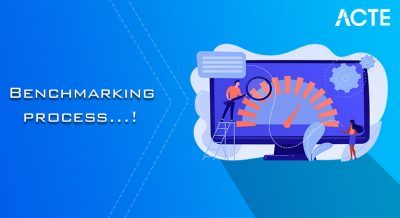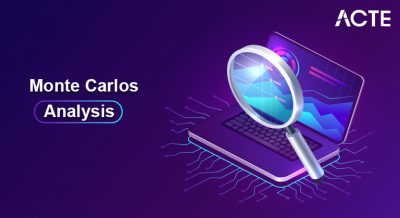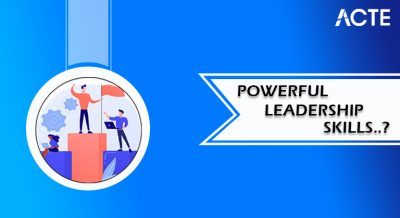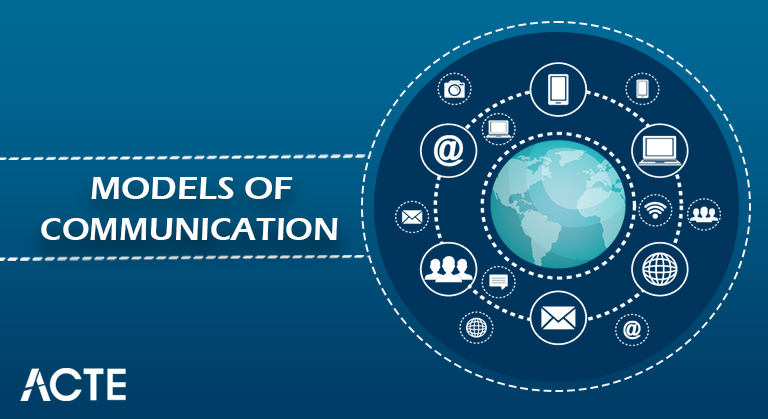
- Introduction
- Getting Communication
- What is a Model?
- Types of Communication Model
- Destinations of Models of Communication
- Goals of Models of Communication
- Presenting Features of Communication processes
- Advantage
- Disadvantage
- Pre imperatives
- Conclusion
- For a long time, man has known the significance of Communication. Today, with different means by which one can impart, it has become a lot more straightforward to convey a message to the next party, than it was quite a few years prior.
- Each association, regardless of their aptitude and where they are arranged, and what scale they work, understand and esteem the significance of good Communication.
- This Communication for associations happens both inside the association as well similarly as with other external partners outside.
- Thus, any business association actually should comprehend the Communication models out there, so they can involve them in upgrading compelling Communication in the association.
- Written Communication, like messages, letters, reports, updates, and different archives.Oral Communication. This is either eye to eye or via telephone/video conferencing, and so forth
- The third kind of Communication, likewise generally utilized yet frequently underrated is non-verbal Communication, which is by utilizing motions or even just body developments that are made. These also could convey different messages to the next party and is a similarly significant strategy for Communication.
- The techniques for Communication also should be painstakingly considered before you settle on which strategy to utilize for your motivations. Not all specialized strategies work for all exchanges.
- When the techniques for Communication have been perceived, the subsequent stage is to consider different Communication models. Because of the significance of Communication, various sorts of models have been presented by specialists throughout the long term.
- The models help the business associations and different foundations to see how Communication functions, how messages are communicated, how it is gotten by the other party, and how the message is in the end deciphered and perceived.
- Aristotle Model of Communication
- Berlo’s Model of Communication
- Shannon and Weaver Model of Communication
- Schramm’s Model of Communication
- Helical Model of Communication
- Components of Communication
- Powerful Communication
- Boundaries to Effective Communication
- Steps to be an Effective Communicator
- Why Leaders Need to Communicate
- Hierarchical Vision
- Strategies for Communicating Vision
- Imparting Vision
- The direct or transmission model of Communication, as displayed in Figure 2.2.1, portrays Communication as a straight, one-way process in which a source purposefully communicates a message to a collector (Ellis and McClintock, 1990). This model spotlights on the shipper and message inside a communication experience.
- Albeit the recipient is remembered for the model, this job is considered all the more an objective or endpoint instead of splitting of continuous interaction. We are left to assume that the recipient either effectively gets and comprehends the message or doesn’t.
- The researchers who planned this model stretched out on a straight model proposed by Aristotle hundreds of years before that incorporated a speaker, message, and listener. They were likewise affected by the coming and spread of new Communication advancements of the time like telecommunication and radio, and you can presumably see these specialized impacts inside the model (Shannon and Weaver, 1949).
- Consider how a radio message is sent from an individual in the radio studio to you tuning in your vehicle. The shipper is the radio commentator who encodes a verbal message that is sent by a radio pinnacle through electromagnetic waves (the channel) and at last, reaches your (the recipient’s) ears through a receiving wire and speakers to be decoded.
- The radio commentator couldn’t say whether you accept their message or not, however, if the gear is working and the channel is liberated from static, there is a decent opportunity that the message was effectively gotten.
- Albeit the transmission model might appear to be basic or even immature to us today, the formation of this model permitted researchers to look at the Communication cycle in new ways, which at last prompted more intricate models and speculations of Communication.
- The intuitive or collaboration model of Communication, as displayed in Figure 2.2.2, depicts Communication as an interaction in which members substitute situations as source and collector and create importance by sending messages and getting criticism inside physical and mental settings (Schramm, 1997).
- Rather than delineating Communication as a straight, one-way process, the intelligent model joins criticism, which makes Communication a more intuitive, two-way process.
- Input incorporates messages sent because of different messages. For instance, your teacher might react to a point you raise during class conversation or you might highlight the couch when your flat mate asks you where the controller is.
- The consideration of an input circle likewise prompts a more mind-boggling comprehension of the jobs of members in a communication experience. Rather than having one shipper, one message, and one beneficiary, this model has two source collectors who trade messages. Every member substitute jobs as shipper and recipient to keep a communication experience going.
- Albeit this appears to be a noticeable and intentional cycle, we shift back and forth between the jobs of source and beneficiary rapidly and frequently without a cognizant idea.
- The intuitive model is likewise less message engaged and more connection centered. While the straight model zeroed in on how a message was sent and whether or not it was gotten, the intelligent model is more worried about the Communication interaction itself. Truth be told, this model recognizes that such countless messages are being sent at one one of them may not beget.
- A few messages are additionally accidentally sent. Along these lines, Communication isn’t passed judgment on powerful or inadequate in this model in light of whether or not a solitary message was effectively communicated and gotten.
- As the investigation of Communication advanced, models extended to represent a greater amount of the corresponding interaction. Numerous researchers view Communication as more than a cycle that is utilized to carry on discussions and convey meaning. We don’t send messages like PCs, and we don’t perfectly switch back and forth between the jobs of source and beneficiary as communication unfurls.
- We likewise can’t intentionally choose to quit conveying since Communication is more than sending and getting messages. The exchange model varies from the transmission and collaboration models in huge ways, including the conceptualization of Communication, the job of shipper and collector, and the job of setting (Berglund, 1970).
- The exchange model of Communication portrays Communication as a cycle in which communicators produce social real factors inside friendly, social, and social settings. In this model, which is displayed in Figure 2.2.3, we don’t simply impart to trade messages; we convey to make connections, structure intercultural collusions, shape our self-ideas, and draw in with others in discourse to make networks.
- The jobs of shipper and beneficiary in the exchange model of Communication contrast altogether from different models. Rather than marking members as shippers and recipients, individuals in a communication experience are alluded to as communicators. Dissimilar to the intelligent model, which proposes that members substitute situations as source and recipient, the exchange model recommends that we are at the same time shippers and beneficiaries.
- This is a significant expansion to the model since it permits us to see how we can adjust our Communication, for instance, a verbal message highly involved with sending it in light of the Communication we are all the while getting from our communication accomplice.
- The conditional is the most unique of Communication models. One outstanding element of this model is the move from alluding to individuals as shippers and recipients to alluding to individuals as communicators. This suggests that Communication is accomplished as individuals both send and get messages. Fundamentally, this model perspectives Communication as an exchange.
- All in all, Communication is an agreeable activity wherein communicators co-make the cycle, result, and viability of the association.
- Not at all like the straight model in which importance is sent starting with one individual then onto the next, likewise not at all like the interactional model in which comprehension is accomplished through criticism, individuals make shared significance in a more unique cycle in the conditional model.
- This model likewise puts more accentuation on the area of involvement. While every communicator has an exceptional area of involvement, they should likewise occupy a common area of involvement. As such, communicators should share at minimum some level of cross-over in culture, language, or climate assuming that individuals are to convey by any means.
- This model likewise perceives that message will impact the reactions, or ensuing messages, delivered in the Communication cooperation. This implies that messages don’t remain solitary, but rather are interrelated.
- Giving data concerning components of a Communication.
- Leading exploration. Giving data as far as ways of advancing achievement of Communication processes.
- Creating data as far as elements that would prompt disappointment of communication processes.
- Reasonable execution of Communication processes.
- Showing data stream.
- Presenting elements of Communication processes.
- Giving data in regards to components of a Communication.
- Directing examination.
- Giving data as far as ways of advancing accomplishment of Communication processes.
- Producing data as far as elements that would prompt disappointment of Communication processes.
- Sensible execution of Communication processes.
- Showing data stream.
- Giving data concerning components of a Communication
- Leading exploration
- Giving data as far as ways of advancing achievement of Communication processes.
- Giving data as far as ways of advancing achievement of Communication Process.
- Producing data as far as variables that would prompt disappointment of the Communication Process.
- Reasonable execution of Communication processes.
- Showing data stream
- Presenting elements of Communication processes
- Show of Communication processes
- Understanding the intricacies of Communication processes.
- Measures to achieve upgrades in Communication processes.
- It prompts over effortlessness of occasions.
- It’s not closely resembling different methods of human Communication.
- It’s fundamentally formal and doesn’t represent substance.
- This model doesn’t separate significant thoughts from those which are not.
- It stresses control to a machine
- It changes human over to a machine
- It stresses the issues of human Communication
- Indeed, even with the right image it can prompt misconception.
- It’s less direct and records just for reciprocal Communication.
- It has to a couple of factors.
- Gives unanswered inquiries.
- it features the various components,
- it focuses on interrelationship among the components,
- it depicts the job every component plays simultaneously,
- it clarifies the Communication stream, lastly,
- it draws out the definition and approach
- You want to remember that these intricacies that go with the Communication models may just make understanding the Communication a lot harder.
- It is best that the two players, the source (the shipper) and the collector, are clear with regards to what they might want to examine. This is otherwise called the setting of the message.
- This would make it a lot simpler to interpret what the other party is talking about without a real problem. The course of Communication, whenever kept straightforward, ought not as a rule have an excessive number of issues, and the message will be effortlessly perceived by the two players.
Introduction:
Getting Communication:
Communication today is fundamental of three kinds
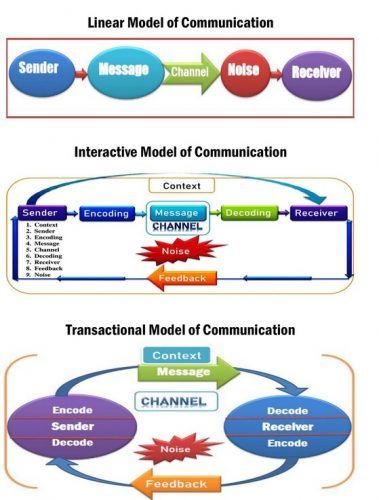
What is a Model?
A model is generally used to portray any thought, thought or idea in a more straightforward manner through graphs, pictorial portrayals and so on Models go quite far in making the comprehension of any idea simple and clear. Through a model, one can without much of a stretch comprehend an interaction and reach inferences from it. In less complex words a model simplifies the learning.
Allow us now to find out with regards to the different Communication models:
Communication Model and Organizational Vision:
Types of Communication Model:
1.Linear model of Communication:
2.An intuitive model of Communication:
3.Exchange model of Communication:
4.Conditional Models:
Destinations of Models of Communication:
The essential goal of models of Communication is to get a comprehension of the Communication processes (What is Communication Model?). Likewise, it helps in understanding significant parts of Communication. The different destinations of models of Communication are:
Goals of Models of Communication:
The essential goal of models of Communication is to get a comprehension of the Communication processes . Also, it helps in understanding significant parts of Communication. The different destinations of models of Communication are:
Presenting Features of Communication processes:
The essential target of models of Communication is to gain a comprehension of the Communication processes . Furthermore, it helps in understanding significant parts of Communication. Furthermore, it helps in understanding significant parts of Communication, the different targets of models of Communication are:
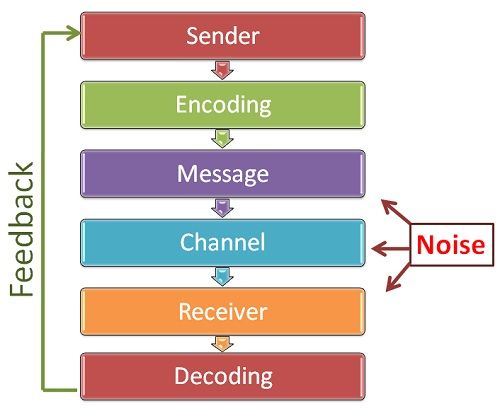
Advantage:
1.It gives both general and specific vantage focuses.
2.It gives space to pose inquiries and to decipher crude staff of perception.
3.It can lead us to new revelations through pursuing its direction.
4.It provides requests and intelligence of intricate occasions.
5.Its taxi be utilized in low-level Communication texts.
6.It has to lead to huge turns of events.
7.It’s a guess of the relative multitude of cycles of human Communication
8.It has an incredible heuristic worth.
9.Its ideas are utilized in Communication research.
10.Thoughts can be introduced deftly.
11.Message focused on the transmission of thoughts.
12.It embodies prior focuses.
13.It makes Communication consistent, unrepeatable, habit-forming, and collective.
Disadvantage:
Pre imperatives:
The motivation behind this unit has been to develop a comprehension of the Communication process through depictions of an assortment of models. A model is a significant instrument intended to clarify pictorially how Communication works. The helpfulness of a model is that:
for additional examination. We have momentarily followed the improvement of models, from incredibly straightforward ones to extremely complex ones, and noticed the recognition? attributes of certain models given by famous researchers.




